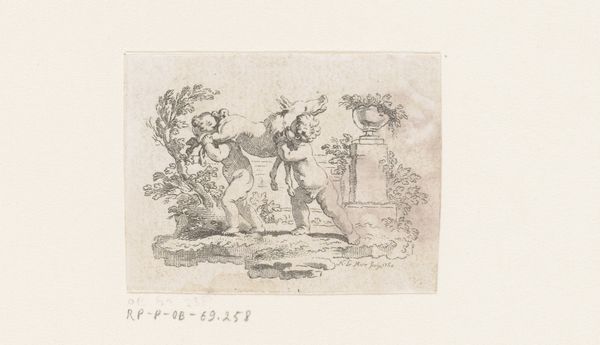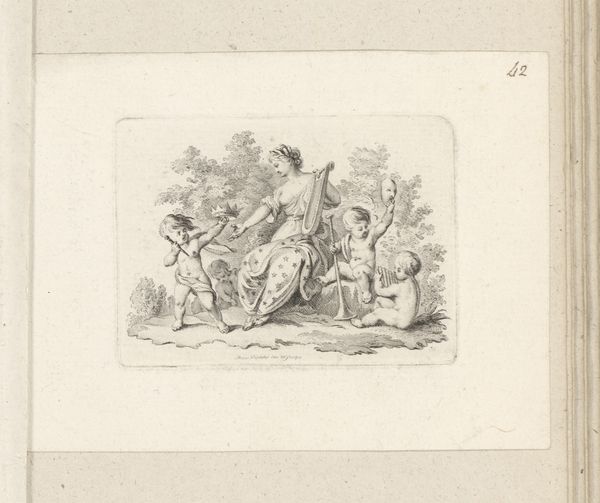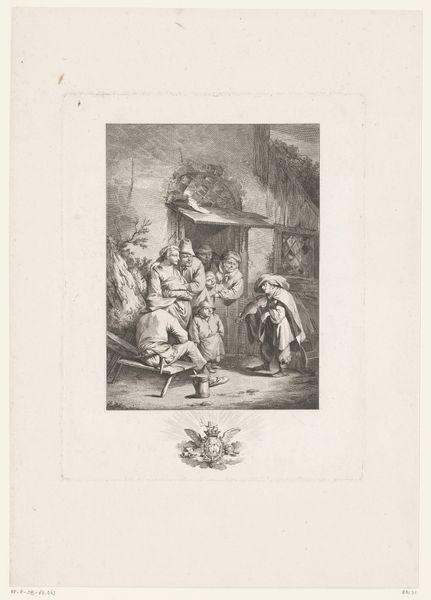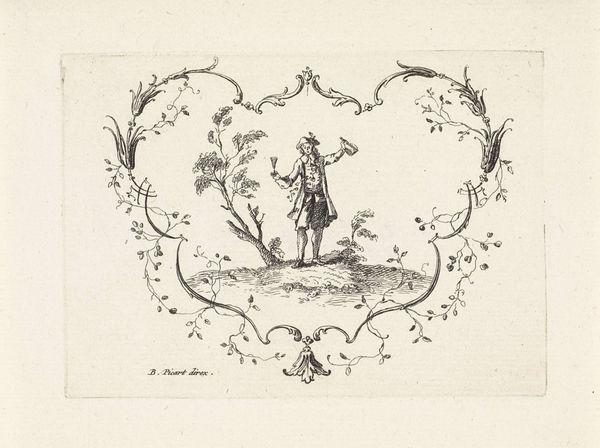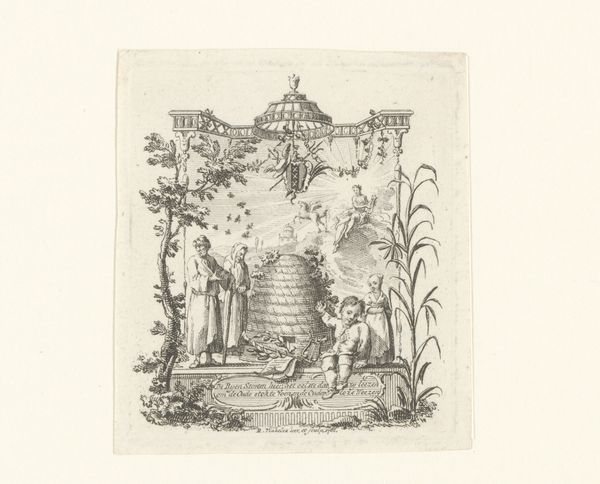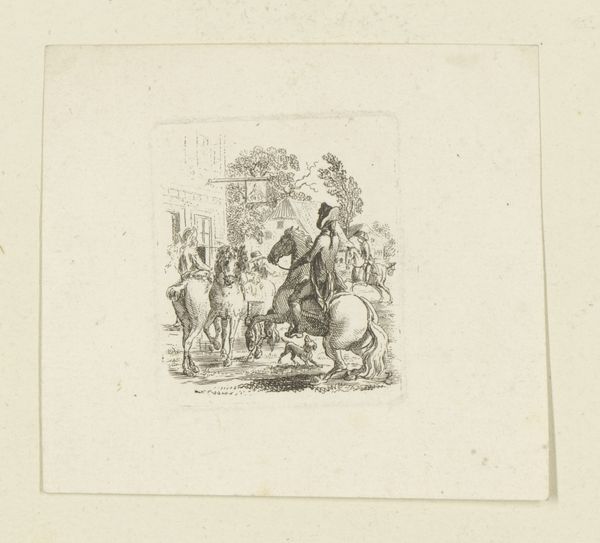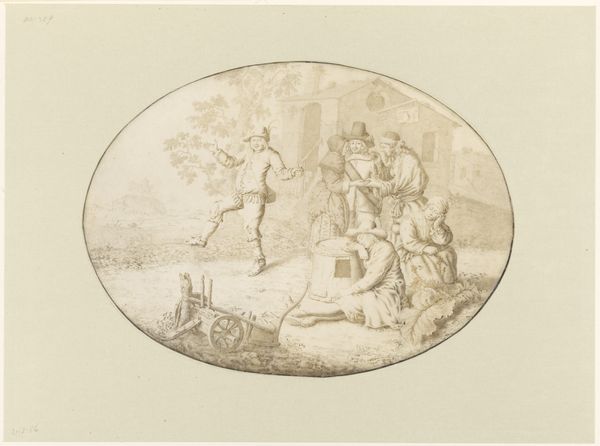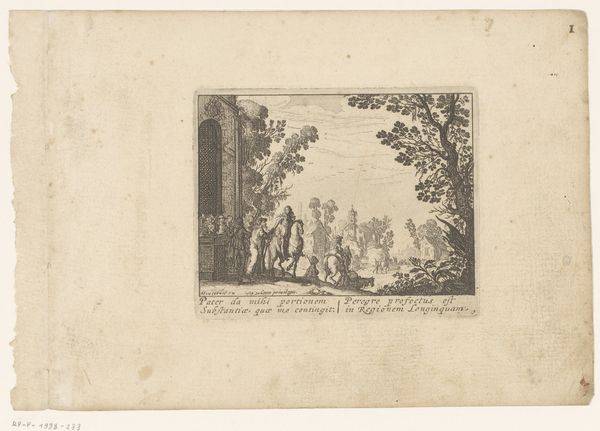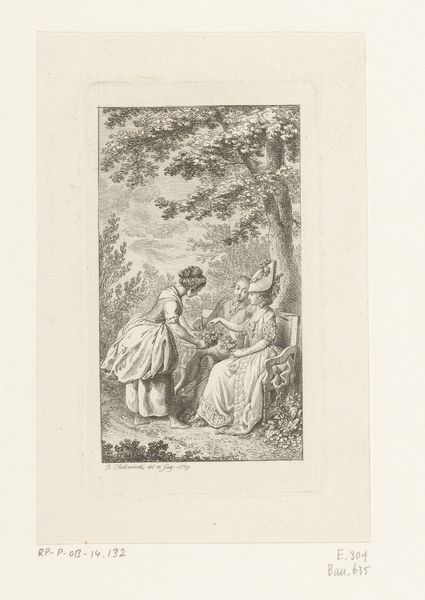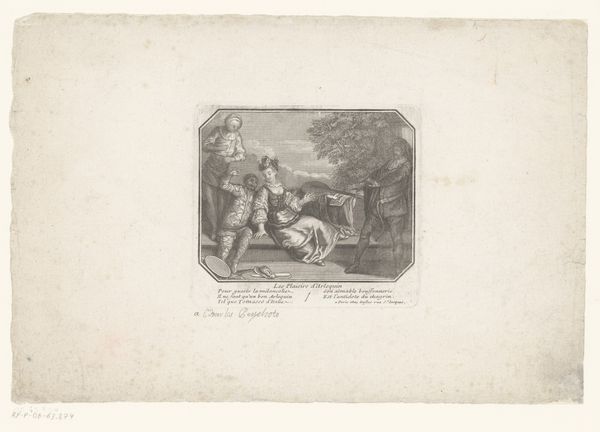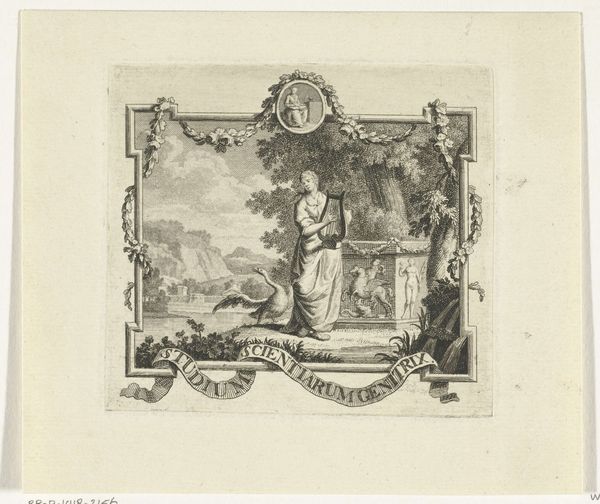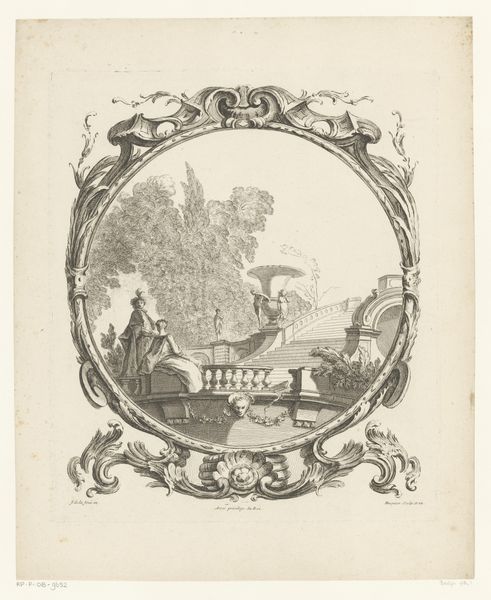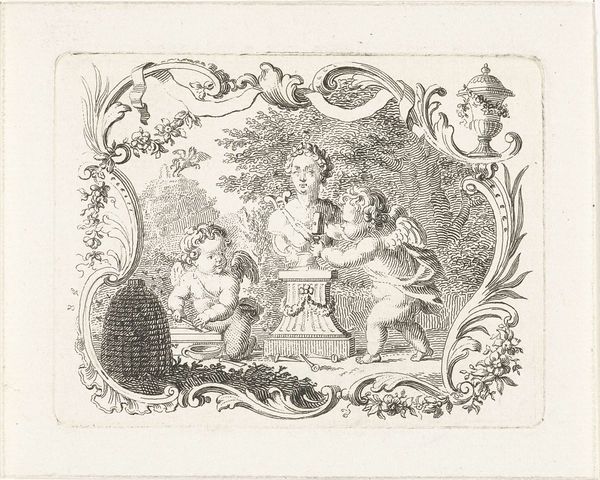
print, etching, paper
#
baroque
# print
#
etching
#
etching
#
figuration
#
paper
#
genre-painting
Dimensions: height 75 mm, width 64 mm
Copyright: Rijks Museum: Open Domain
Curator: This print, created by Noël Le Mire in 1759, is titled "Two Putti by a Birdcage." It resides here at the Rijksmuseum. Editor: It has such a light and airy feel, doesn't it? Those little cupids… or putti, I suppose… seem so delicate against the slightly harsher lines of the cage. It’s baroque but almost verging on rococo, that lightness. Curator: Absolutely. Examining it through a materialist lens, notice the precise lines achieved by the etching process on paper. Etchings like this allowed for the relatively inexpensive distribution of imagery. Think of it: Le Mire could produce multiples of this design for a broader audience. These weren't necessarily for the wealthy elite; this imagery could be accessed by a rising middle class. Editor: And in terms of reception, the print likely served as a charming, almost frivolous, decoration. Birdcages themselves were symbols of status but the genre scene featuring playful putti speaks to the societal preoccupation with leisure. But what of the bird inside? Captivity juxtaposed with innocent freedom is certainly interesting. Curator: Well, perhaps that's where the materiality of the cage itself becomes more poignant. The craftsmanship of the cage versus the putti's idle interaction with it is hard to ignore. We must not forget, however, the art market's role in perpetuating this imagery and catering to popular taste through prints like this. Editor: So it speaks to a kind of visual consumption that mirrors the bird’s captivity. This image isn’t just passively decorative but indicative of a structure—an economic ecosystem sustained by these aesthetic preferences. How were such prints displayed, sold, collected? Were there print seller catalogs and networks influencing distribution? Curator: Precisely. The print functions both as a consumer good itself and as a symbol reflective of the tastes and, frankly, the social structure of the period. The imagery also mirrors Baroque era taste for refined goods for the wealthy consumer. Editor: Understanding its social context really elevates the print. I initially only observed the cute putti and the dainty cage, but the wider view truly enriches our experience. Curator: Indeed, reflecting on the production process, dissemination and sociopolitical role, all these factors give added depth to what may first appear as merely ornamental.
Comments
No comments
Be the first to comment and join the conversation on the ultimate creative platform.
